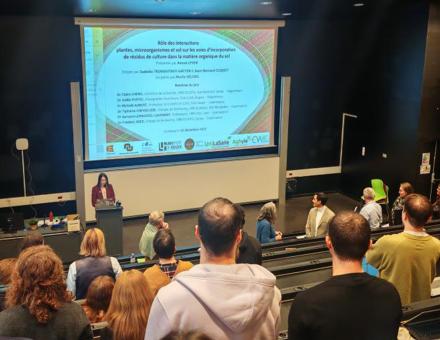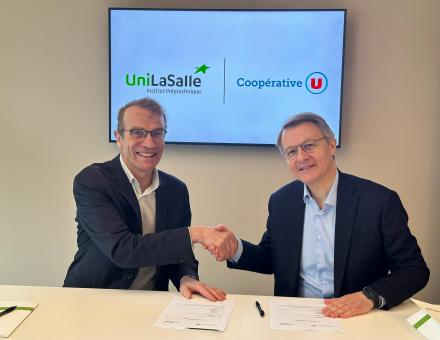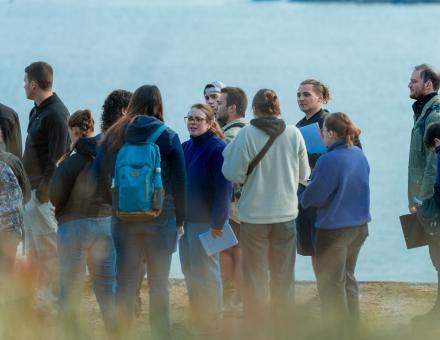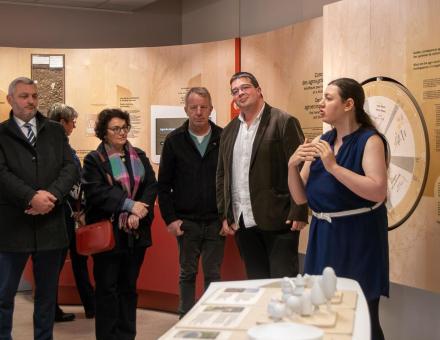Will it be possible, in the long term, to ensure France's food sovereignty in livestock products (dairy products, eggs, and meat)? Faced with insufficient generational renewal, innovative solutions must be found urgently to improve access to agricultural land and financing. Reconfiguring the territorial network and further financializing livestock farming systems are two measures that could lead to a dual sector combining large-scale farms and regionally based sectors.
Society has high expectations of the various livestock sectors: taste quality, environmental quality, typical characteristics, respect for animal welfare, transparency, etc. However, these expectations can only be met in a favorable regional context, where strong regulatory initiatives, entrepreneurship, and technological and organizational innovations come together. Ensuring the generational renewal of French and European livestock farmers means ensuring that French and European consumers and citizens can continue to eat meat, eggs, and milk that meet their expectations for environmental and societal sustainability. In addition to this requirement for food sovereignty in terms of quality, there is also a need for protein sovereignty, so that it is not delegated to the Mercosur countries, North America or China.
By 2030, more than a third of farmers will reach retirement age, according to the Chambres d'Agriculture de France (French Chambers of Agriculture). However, one in three farmers will not be replaced, according to the Centre d'études et de prospective du ministère de l'agriculture et de la souveraineté alimentaire (Center for Studies and Forecasting of the Ministry of Agriculture and Food Sovereignty). Structural problems threaten the long-term generational renewal of agricultural sectors, with livestock farming being no exception. Yet the sustainability of French meat, dairy, and egg production is crucial to France's protein sovereignty.
Protectionism in the Trump II era
In the wake of an unprecedented paralysis of global trade during the pandemic, and with the protectionism of the new Trump II administration, this protein sovereignty is crucial, and even more strategic than energy or digital sovereignty.
There is often talk of a lack of attractiveness for livestock farming professions, which are considered difficult, poorly paid in relation to the investment required, and demanding in terms of the time and effort needed to care for living creatures. In addition, these professions have been under fire in recent years from societal criticism that tends to focus on animal welfare issues. While legitimate, these concerns also reflect a lack of understanding linked to a certain distance between society and agriculture and livestock farming. According to the French Chambers of Agriculture, two out of three farms are unable to find a buyer, and 80,000 full-time equivalent jobs (FTEs) are estimated to have been lost in the livestock sector between 2010 and 2020. This raises the question: what models currently govern transfers? And what are the obstacles, levers, and factors that ensure a successful transfer?
As part of a chair on changes in livestock farming and societal challenges developed in partnership by UniLaSalle and the Avril Group, Associate Professors and students from UniLaSalle interviewed a panel of stakeholders in the livestock farming sector on issues of generational renewal. The study sought to understand the obstacles and drivers for different transfer contexts, some of which are becoming increasingly important. While the transfer of farms within the family remains the norm, the proportion of transfers outside the family has risen sharply over the past 15 years, from 34.3% in 2010 to 22.7% before 2010.
Significant investment for the buyer
Generational renewal will therefore also involve the takeover of farms outside the family, with all the barriers that this entails (purchase of land and infrastructure, lack of family experience, lack of networks, etc.). In fact, even within the family, significant investment in modernization may be necessary in several areas:
- buildings and infrastructure (improving animal welfare, automating feeding)
- monitoring and management technologies (animal monitoring sensors, climate control)
- effluent treatment and environmental management equipment (improved storage pits, air management)
- automation and robotization (feed distribution, animal sorting).
These investments in technological and digital innovations are significant, potentially representing several hundred thousand euros for a single farm. In fact, each farm is unique in terms of its technical and financial capabilities, its history and values, and its geographical context. Transmission models cannot therefore be standardized, as farms are too diverse.
Reinventing agricultural business models
That said, beyond this diversity, two difficulties consistently emerge: access to land and the problem of financing. Shouldn't all stakeholders and actors in the livestock sector, including the state and local authorities, work together to create innovative models aimed at new land use planning and increased financialization of farms?
One avenue could be to integrate more non-farmers into farmer groups. Investment could come, in particular, from financial investments marketed as support for farms. Indeed, part of French savings could be “redirected” towards France's food and protein sovereignty.
The introduction of new savings products could thus be encouraged by the public authorities, with tax incentives. Naturally, such a policy poses a risk of land retention if these financial mechanisms are not controlled by all stakeholders (for example, if land is purchased by banks and taken off the market until the right moment to sell and make a significant profit).
Relocation of livestock farming systems
With regard to land, another issue concerns the territorial network of farms and industrial distribution (cooperatives) and processing (dairy industries) infrastructure in certain regions of western France, particularly Brittany and Normandy. If competition for land becomes more intense, some of the candidates for takeover could be directed towards regions experiencing massive farm abandonment, such as the Centre region. However, such action requires significant consultation, coordination, and planning between all links in the dairy and meat supply chains so that new distribution and processing units can be set up or relocated, thereby creating a sufficient ecosystem to sustain livestock farming and reduce its logistical constraints.
Furthermore, such an ecosystem cannot be established without addressing the growing risk of veterinary desertification in rural areas. This would require the involvement of local authorities and health agencies to improve the attractiveness of the profession, in particular through mechanisms to compensate for the constraints inherent in the rural veterinary profession.
The key role of the State
Only the State, in collaboration with the regions and local authorities concerned and professional agricultural organizations (PAOs), seems capable of carrying out such an operation to relocate livestock farming systems. Furthermore, regenerating the link to the land (through the production of feed for farm animals) would enable livestock farmers to become partially independent of fluctuations in agricultural commodity markets.
As a result, takeover projects incorporating some of the land used for producing feed for their animals would enable candidates to develop potentially more resilient livestock farms, offering guarantees of stability to improve their access to bank loans. However, it is precisely in regions where land is more affordable, more available, and less in competition with other crops (cereal farming, in particular) that this opportunity to recreate these links to the land seems most feasible. We can therefore see that financing and land/links to the land are closely linked. Acting simultaneously on these two levers seems to us to be a way forward to ensure the survival and maintenance of livestock farming sectors... in France and in Europe.
Raphaël Stephens, Social Sciences Researcher (food, innovation, transitions, science in society, digital humanities), UniLaSalle and Amal Azizi EP ASKRI, Associate Professor of Economics and Chair of “Changes in Livestock Farming and Societal Challenges,” UniLaSalle
This article is republished from The Conversation under a Creative Commons license. Read theoriginal article.






